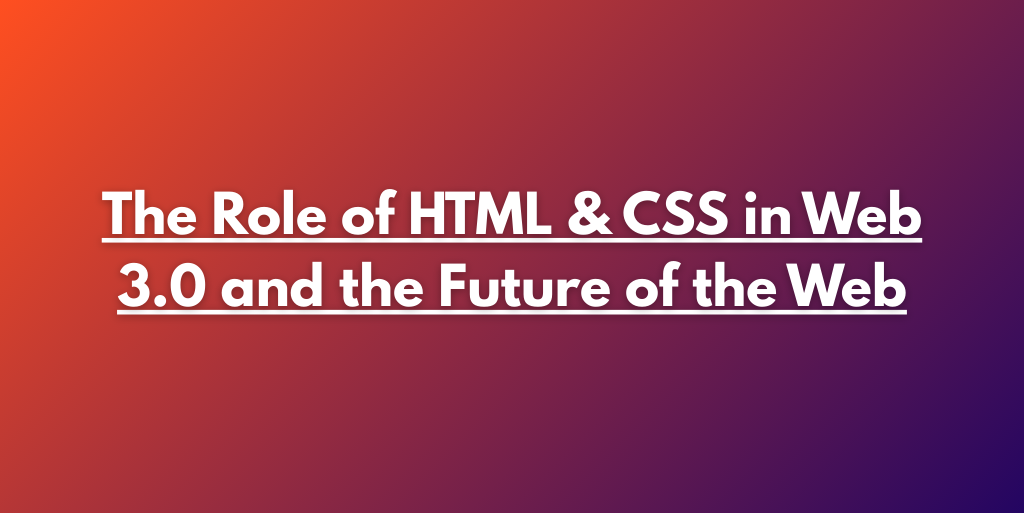React Server Components in 2025: The Future of Rendering Performance

Quick Summary React Server Components (RSC) represent the next evolution of frontend rendering in modern web applications. Introduced to help bridge the gap between static generation and client-side interactivity, RSCs allow developers to offload logic-heavy components to the server without sacrificing the user experience. In this blog, we’ll explore what React Server Components are, how they compare to traditional Client-Side Rendering (CSR) and Server-Side Rendering (SSR), and how they dramatically improve performance. We’ll also walk through a real-world implementation with Next.js and analyze metrics like TTFB, LCP, and bundle size. Table of Contents What Are React Server Components? Why Were They Introduced? Key Differences: CSR vs SSR vs RSC Setting Up Server Components in Next.js 14 When to Use Server vs Client Components Performance Gains: Metrics and Visuals Best Practices for RSC Adoption Common Mistakes to Avoid Conclusion What Are React Server Components? React Server Components are components rendered fully on the server and sent as serialized payloads to the browser. Unlike SSR, they never include client-side JavaScript unless explicitly needed, — resulting in a lighter frontend and faster rendering. “Render only what you need, where you need it — with zero client JS overhead.” Why Were They Introduced? Modern SPAs suffer from bloated bundles and complex hydration processes. RSCs address this by: Reducing JavaScript bundle size Improving initial load speed Allowing direct server access to databases, files, etc. Keeping logic-heavy components out of the browser Key Differences: CSR vs SSR vs RSC Feature CSR SSR RSC Render Location Browser Server Server JS Bundle Size Large Medium Minimal (or 0) Interactivity Full Full Partial (by design) Time to First Byte (TTFB) Fast Slower Fast Suitable For Highly interactive UIs SEO-heavy pages Static-heavy + hybrid UIs Setting Up Server Components in Next.js 14 Next.js 14 introduces full support for RSC via the App Router. Here’s a basic setup: Project Structure /app /page.tsx(Server Component) /client-component.tsx(“use client”) Example Server Component // app/page.tsx import ProductList from ‘./ProductList’; export default async function Page() { const products = await getProducts(); return <ProductList products={products} />; } Client Component with Interactivity // app/ProductList.tsx “use client”; export default function ProductList({ products }) { return ( <ul> {products.map(p => <li key={p.id}>{p.name}</li>)} </ul> ); } When to Use Server vs Client Components Use Server Components for Use Client Components for Data fetching from DB/API User input, forms, interactivity Rendering markdown/posts Modals, dropdowns, animations Static page sections Real-time updates (sockets) Performance Gains: Metrics and Visuals React Server Components reduce client bundle size by up to 40–60% in large apps. Below are the key metric comparisons: ⚙️ Page Load Performance Metric CSR SSR RSC TTFB (ms) 60 180 75 LCP (ms) 2500 1800 1100 FID (ms) 200 160 40 Based on benchmarks using a product listing page (300 items) 📊 JavaScript Bundle Size CSR: ~300KB SSR: ~220KB RSC: ~90KB 📈 Lighthouse Score Comparison 📍 CSR: Performance 78 | TTI 4.3s 📍 SSR: Performance 86 | TTI 3.2s 📍 RSC: Performance 97 | TTI 1.6s 🔍 Chart: Load Time Breakdown (ms) |——————————| | Initial HTML Render ████ | | Hydration Time ███████████ | | JS Parsing ██████ | | RSC Load █ | |——————————| Note: Server Components avoid hydration and minimize JS parsing. Best Practices for RSC Adoption ✅ Use server components by default in App Router unless interactivity is needed. ✅ Separate logic: fetch and transform data server-side. ✅ Avoid overusing “use client” — keep interactive components focused. ✅ Use Suspense boundaries for loading states. ✅ Monitor bundle size and avoid importing client-only packages in server files. Common Mistakes to Avoid ❌ Using “use client” unnecessarily negates server-side benefits. ❌ Client Components fetching data that can be handled on the server. ❌ Improperly mixing client/server imports, causing build errors ❌ Not paying attention to fallback loading states in Suspense boundaries ❌ Assuming all components are better managed server-side (while some must interact with the client). Conclusion React Server Components bring a paradigm shift to frontend rendering. By combining the performance benefits of server rendering with the flexibility of React components, RSCs enable faster, lighter, and more scalable web apps. In 2025, Server Components are not just an optimization — they’re a competitive edge. Looking to optimize your React app using Server Components? Our frontend architects specialize in Next.js and can help scale your project with the latest practices. Ready to go server-first? Let’s make your React app faster than ever.
Why Enterprises Prefer Node.js for Scalable Web Applications

Quick Summary Enterprises in the world of digital-first expect their backend technologies to provide them with the highest performance while enabling them to scale at breakneck speeds and ship code even faster. Node.js Development: JavaScript, with its event-driven structure and non-blocking asynchronous data strategy, has become one of the best choices for building innovative web applications that can scale quickly. Node.js is transformative for building & scaling high-traffic platforms. In this article, we will explore the reasons that enterprises choose Node.js – how it supports scalable architectures such as microservices and what advantages it offers with respect to performance, cost-effectiveness, and real-world results. Table of Contents What Is Node.js? What Makes Node.js Stand Out? Key Reasons Enterprises Choose Node.js for Scalability Real-World Enterprise Use Cases How to Get Started with Node.js Best Practices for Scalable Node.js Applications Common Mistakes to Avoid Conclusion What Is Node.js? Node. js is an open-source, cross-platform runtime environment to run JavaScript applications on the server side. Using Google Chrome’s V8 JavaScript engine to run the code beyond the browser, it is great for creating high-performance, scalable network applications. What Makes Node.js Stand Out? Event-Driven & Non-Blocking I/O: Allowing multiple requests to be handled at the same time without blocking! Google V8 Engine: Translates JavaScript to top-speed machine code. Unified Language Stack: Use JavaScript in both frontend and backend. Extensive NPM Ecosystem: Over 1M packages readily available for development Key Reasons Enterprises Choose Node.js for Scalability 1. Asynchronous & Non-Blocking I/O for High Performance Conventional web frameworks like PHP and Ruby on Rails have blocking I/O models. Node.js operates on a single-threaded event loop that enables it to handle thousands of simultaneous connections efficiently. Result: Reduced response times, smoother performance under load. 2. Microservices Architecture Compatibility Node.js is compact and modular — great for microservices. Node.js is used by enterprises such as Netflix and Uber so they can decompose their monoliths into independently scalable services. Benefit: Isolated scalability and faster deployment cycles. 3. Real-Time Application Support Node.js is designed for real-time communication with WebSockets. It’s used extensively in applications such as messaging, video streaming, and collaborative tools. Example: LinkedIn rebuilt its mobile backend using Node.js and achieved a 20x performance improvement. 4. Horizontal & Vertical Scalability Node.js allows horizontal scaling (scaling up the number of servers) and vertical scaling (upgrading the server hardware). Suitable for high-growth applications, thanks to clustering and load balancing Outcome: Flexibility to scale as traffic grows. 5. NPM Ecosystem for Faster Development Node.js has a huge ecosystem using NPM, so teams can find modules for authentication, logging, DB access, and other common functions. Case: Walmart used Node.js to scale its backend and NPM packages to scale without downtime for Black Friday. 6. Cost-Efficient Development Model On top of that, we can use the same JavaScript language in our frontend and backend code to minimize duplication and team separation. Node.js applications require lower system resources as well. Savings: Lower hiring costs Faster time-to-market Reduced infrastructure expenditure Real-World Enterprise Use Cases Netflix: Speed & Scalability Switched from Java to Node.js 70% startup time reduction Faster deployment across 200M+ users PayPal: Performance & Code Efficiency 35% faster response times 33% fewer lines of code Doubled requests per second Walmart: Massive Load Handling Used Node.js for mobile app backend Handled 500M page views on Black Friday Achieved 99.99% uptime How to Get Started with Node.js Step 1: Install Node.js Download from nodejs.org. Confirm installation: node -v npm -v Step 2: Initialize a Project Run mkdir my-node-app && cd my-node-app npm init -y Step 3: Install Dependencies npm install express npm install -g nodemon Step 4: Create a Server const express = require(‘express’); const app = express(); const PORT = 3000; app. get(‘/’, (req, res) => res. send(‘Hello, World!’) ); app.listen(PORT, () => { console. console.log(Server running at http://localhost:${PORT}); }); Step 5: Run the Server node index.js or nodemon index.js Best Practices for Scalable Node.js Applications ✅ Optimize for async/await & non-blocking calls everywhere in the app. ✅ Use modular controllers, services, and routers to structure projects. ✅ Configure the environment using ‘dotenv’. ✅ Maintain dependencies to avoid vulnerabilities ✅ Large errors logging and centralized monitoring (Winston, Datadog etc). ✅ Use microservices for services you want to scale independently. ✅ Leverage reverse proxies such as Nginx and clustering for load-balancing Common Mistakes to Avoid ❌ Writing synchronous code in performance-critical sections ❌ Skipping the error control — catch async errors, always ❌ No caching — use redis/memory cache for performance ❌ Not taking security seriously — input validation, use HTTPS, and output sanitization. ❌ Writing a massive amount of logic — compose code in maintainable parts. ❌ Resource usage or performance is not being monitored Conclusion Node.js is a leading framework suitable for enterprise architectures looking for high-performance web applications to scale. It is perfect for rapidly growing enterprises because of its asynchronous architecture, real-time functionality, and microservices support. Ready to scale your application with Node.js? Partner with our experienced Node.js engineers to build robust, efficient, and scalable enterprise-grade solutions. Let’s build the future — with Node.js.
The Role of HTML & CSS in Web 3.0 and the Future of the Web

Quick Summary Web 3.0 is revolutionizing how we interact with the internet — shifting from centralized platforms to decentralized, AI-driven, user-owned ecosystems. Amid these technological leaps, HTML and CSS remain essential tools for building responsive, accessible, and immersive web experiences. This guide explores the enduring importance of HTML and CSS in the age of blockchain, the semantic web, and the metaverse. Table of Contents What Is Web 3.0? The Role of HTML in Web 3.0 The Role of CSS in Web 3.0 HTML & CSS Use Cases in Web 3.0 Best Practices for Web 3.0 Development Common Mistakes to Avoid Future Possibilities Conclusion What Is Web 3.0? Web 3.0, also known as the decentralized or semantic web, enhances how data is shared, secured, and interpreted online. Unlike Web 2.0, which relies on centralized control, Web 3.0 is characterized by: ✅ Decentralization – Blockchain-based data storage and ownership. ✅ Smart Contracts – Automated blockchain transactions. ✅ Semantic Web – AI-enabled contextual understanding. ✅ User Privacy – Control over personal data. ✅ AR/VR & Metaverse Integration – Immersive digital spaces. Despite these advancements, HTML and CSS are the foundation for user interfaces in decentralized applications. The Role of HTML in Web 3.0 1. Structuring Decentralized Websites <!DOCTYPE html> <html> <head> <title>Web 3.0 DApp</title> </head> <body> <h1>Welcome to Decentralized Web</h1> <p>Experience user-owned content and blockchain interactions.</p> </body> </html> HTML remains the backbone for DWebs hosted on peer-to-peer networks. 2. Semantic Tags for AI & Accessibility <article> <header> <h1>Understanding Smart Contracts</h1> <time datetime=”2025-03-30″>March 30, 2025</time> </header> <section> <p>Smart contracts automate blockchain-based agreements.</p> </section> </article> Semantic HTML helps AI systems understand, rank, and serve content more intelligently. 3. HTML for dApps & Wallet Interactions <button onclick=”connectWallet()”>Connect Wallet</button> <script> function connectWallet() { alert(“Connecting to Web3 wallet…”); } </script> Web3.js and Ethers.js may handle logic, but HTML is essential for the UI. 4. Progressive Web Apps (PWAs) <meta name=”viewport” content=”width=device-width, initial-scale=1″> <link rel=”manifest” href=”/manifest.json”> HTML enables dApps to work offline and provide app-like functionality. The Role of CSS in Web 3.0 1. Responsive, Adaptive Layouts @media (max-width: 768px) { body { background-color: #111; color: white; } } CSS ensures accessibility on all devices, from mobile to VR headsets. 2. Grid & Flexbox for Decentralized Dashboards div { display: grid; grid-template-columns: repeat(3, 1fr); gap: 20px; } Modern layout tools help build token dashboards, NFT galleries, and wallets. 3. Dark Mode & Custom Themes :root { –bg-color: #1a1a1a; –text-color: white; } .dark-mode { background-color: var(–bg-color); color: var(–text-color); } User-owned design preferences align with Web 3.0’s personalization goals. 4. Immersive UI & Animation @keyframes fadeIn { from { opacity: 0; } to { opacity: 1; } } .button { animation: fadeIn 2s ease-in-out; background: linear-gradient(45deg, #ff00ff, #00ffff); box-shadow: 0 0 10px rgba(255, 0, 255, 0.6); } CSS makes blockchain-based apps visually futuristic and engaging. HTML & CSS Use Cases in Web 3.0 Use Case Description dApps Build wallet connections, token viewers, and DeFi dashboards NFT Platforms Display assets with responsive and animated layouts Metaverse Interfaces Style immersive AR/VR content and avatars Semantic Search Engines Use HTML5 tags for machine-readability Decentralized Social Networks Structure user feeds and content portals Best Practices for Web 3.0 Frontend Development ✅ Use semantic HTML to aid AI and SEO. ✅ Optimize CSS for minimal load times. ✅ Support dark mode and accessibility preferences. ✅ Use Flexbox/Grid for responsive blockchain dashboards. ✅ Keep interfaces lightweight and modular. Common Mistakes to Avoid ❌ Relying only on JavaScript for structure — HTML matters. ❌ Ignoring responsive design — dApps must support all screen sizes. ❌ Overusing animations — hurts performance in VR/AR. ❌ Using bloated frameworks unnecessarily. ❌ Failing to support semantic markup weakens AI-driven UX. Future Possibilities 🧠 AI-Driven Interfaces – HTML structures tailored by AI preferences. 🌐 Metaverse Web Pages – HTML & CSS defining digital 3D spaces. 🛍 Decentralized eCommerce – Enhanced storefronts with CSS effects. 💬 Web3 Chat Interfaces – Styled in real-time with smart contracts. Conclusion As we move deeper into the decentralized internet, the need for well-structured, beautifully styled user interfaces is more critical than ever. While the backend may be built on blockchain and AI, the frontend still relies on the reliable duo of HTML and CSS. Developers who master these technologies will bridge the gap between futuristic systems and user-friendly experiences. Explore. Design. Decentralize. The future of the web is in your hands. 🚀


